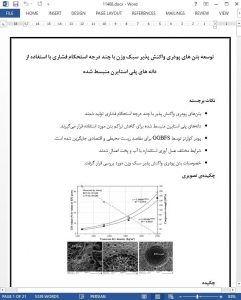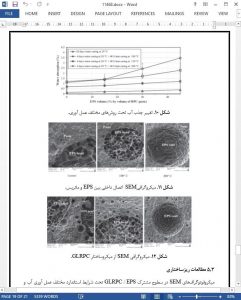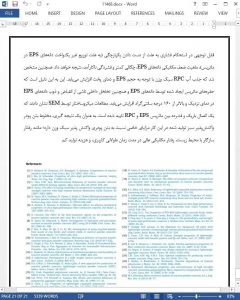Abstract
In this study, a new class of green light weight reactive powder concrete (GLRPC) was developed in different strength-grades by using expanded polystyrene beads. Quartz powder was totally substituted by ground granulated blast furnace slag as an industrial waste material to develop a more cost-effective and environmentally-friendly product. Various mixtures were studied by application of expanded polystyrene beads of the size between 0.5 and 2.3 mm, CEM-II Portland cement, silica fume, GGBFS, polycarboxylate based superplasticizer and water. The effects of different curing regimes including standard water curing and heat curing at 100, 150 and 200 °C on compressive strength, water absorption, and microstructure of GLRPC were investigated. Based on the measurements, density, compressive strength and water absorption values between 1257 to 1840 kg/m3, 20.8 to 85.6 MPa, 3.47 to 0.22% for GLRPC mixtures were achieved, respectively.
1. Introduction
In the early 1990s, a new class of cement based composite with very high mechanical properties and durability, called reactive powder concrete (RPC) was developed in France [1]. RPC was obtained by modifying the microstructure according to the following basic principles [1–5]:
1) Expulsion of coarse aggregate and utilization of fine reactive powder (less than 600 mm) to enhance homogeneity in RPC and to achieve a compact microstructure.
2) Low water-to-binder ratio for reducing capillary porosity and incorporation of superplasticizer to enhance the rheology of the fresh concrete.
4. Conclusions
A new class of green lightweight reactive powder concrete with different densities ranging from 1257 to 1840 kg/m3 and compressive strengths ranging from 20.8 to 85.6 MPa were successfully developed by using GGBFS to totally replace the quartz powder and incorporating EPS beads at different replacement levels of 15%, 30% and 45% (by volume of binder paste). The obtained results show that incorporation of EPS beads into RPC and increasing its volume results in significant reduction in compressive strength due to loss of integrity (because of non-uniform distribution of EPS beads in the matrix), weak mechanical nature of the EPS beads, lower density and inefficient compaction. It was also found that water absorption of the lightweight RPC increases as the EPS volume and the heat curing temperature are increased. This is due to increase in the matrix air voids introduced by EPS beads and also internal porosity caused by shrinkage and melting of EPS beads at curing temperatures close to and higher than 160 C. Microstructural studies by SEM confirmed a tight and compact interfacial bonding between EPS and RPC matrix. As a concluding remark, the developed green lightweight reactive powder concrete mixtures in this work have certain advantages compared to the available lightweight reactive powder concrete; such as eco-friendly, superlative mechanical behavior at the late ages, and low production cost.











